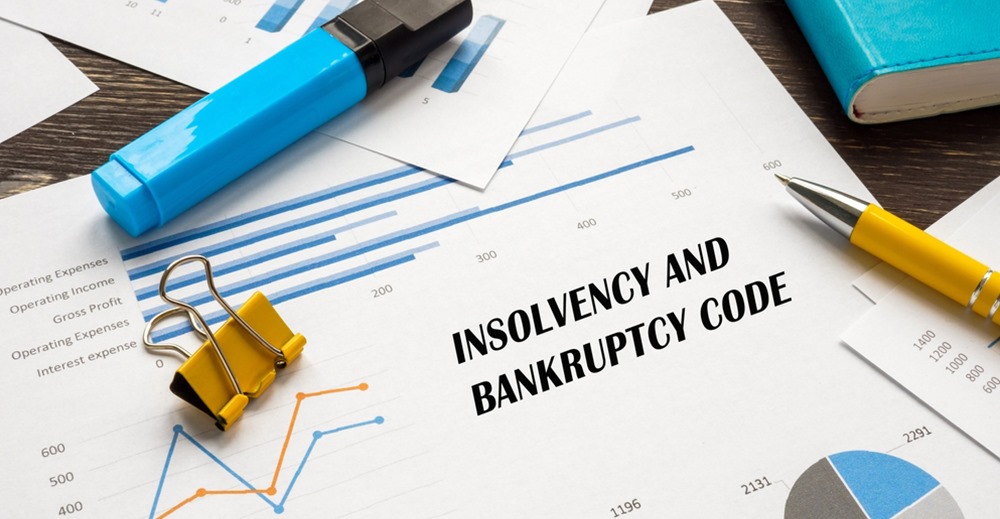
Keynote Address by Hon’ble Mr. Justice Ashok Bhushan at INSOL Academic Conference.

“Regulators and policymakers should favor the use of out-of-court debt restructuring mechanisms (“workouts”) and the adoption of hybrid procedures usually under a formal pre-insolvency framework.”
- A very good morning to all of you. I want to begin by congratulating NLU Delhi for organizing the INSOL International Academic Conference on the theme “Insolvency Ecosystems in Emerging Markets”. I thank the organizers for inviting me as the Chief Guest at this conference, and for asking me to deliver the opening remarks for this conference.
- As I stand before this august gathering of academicians, researchers, legal luminaries, regulators, and policymakers, it gives me great pride to put forth before you the success story of India’s experience with the Insolvency and Bankruptcy Code, 2016 (IBC). Today I will highlight India’s journey under the IBC and why this journey is important while discussing the broader theme of ‘Insolvency Ecosystems in Emerging Markets’. India being an emerging market has fared pretty well under the IBC, and as such, there are a lot of takeaways for this audience to learn from the Indian experience.
- Speaking about insolvency law, we can observe that it plays a crucial role in the real-world economy. Further, the way the insolvency law has been designed in a particular jurisdiction along with the supporting infrastructure for its effective implementation plays an important role in how efficiently that jurisdiction deals with the problem of bad debt. The insolvency ecosystem significantly influences the decisions made by debtors and creditors within a business environment. For example, if creditors perceive that an insolvency system fails to protect their rights or does not enable them to maximize recoveries when debtors become insolvent, they will understandably hesitate to extend credit. This reluctance can hinder a firm’s access to finance and impede economic growth. Similarly, an insolvency system that imposes severe penalties on honest but unfortunate debtors may discourage individuals from starting businesses or taking risks, thereby dampening entrepreneurship and innovation in a country. Additionally, suppose an insolvency regime imposes stringent liability on the directors of insolvent firms even when they have acted in good faith. In that case, highly qualified managers may be deterred from serving on corporate boards.
- Therefore, an effective system for handling corporate insolvency can act as a crucial instrument for fostering entrepreneurship, innovation, access to capital, and economic expansion. The proper distribution of resources depends on robust insolvency regulations that facilitate the orderly closure of failing enterprises and support the emergence of new businesses. Thus, the necessity of a well-structured insolvency system becomes even more pronounced for emerging economies, given their growth potential and increased financial demands. Nonetheless, it’s imperative to handle these systems in a manner that minimizes impact on stakeholders and the overall economy. Robust insolvency regulations are also vital for guaranteeing the provision of credit to both individuals and companies.
- It is noteworthy that an effective insolvency framework should aim to maximize returns for creditors, thereby reducing the losses they ultimately incur from an insolvent firm. This function also serves to prevent future insolvencies and diminish levels of non-performing loans within the banking sector, thereby supporting the broader real economy. Also, a well-functioning insolvency regime should facilitate the restructuring of financially distressed yet viable companies, as well as expedite the liquidation of non-viable firms. In doing so, insolvency law contributes to the efficient allocation of resources across the economy. Furthermore, if a viable firm is successfully rescued, insolvency law has the potential to benefit employees, suppliers, tax authorities, and other stakeholders involved.
- The benefit of corporate insolvency is that it can reduce value destruction in a number of ways. Initially, creditors have the right to enforce their claims and eventually take possession of the debtor’s assets when they are unable to pay their debts. Therefore, the going concern worth of businesses that are profitable might be destroyed by their individual enforcement actions. Because of this, insolvency law reacts by imposing an automatic hold, or moratorium, which prevents creditors from pursuing their claims and compels them to cooperate more. As a result, imposing a moratorium can help creditors adopt a more effective strategy while also preserving assets.
- Until the year 2016, India did not have a strong insolvency framework, which resulted in various problems and worsened the ‘non-performing loans crisis’ within the Indian banking industry. This crisis put a lot of strain on bank lending, raised the expense of capital, and made it very hard for small businesses and individuals to get loans.
- In 2016, India took a major stride forward with the introduction of the IBC. This landmark legislation has acted as a catalyst for economic expansion, providing a streamlined and effective mechanism for resolving insolvencies. It has not only unlocked India’s economic potential but also established a solid foundation for sustainable growth. The IBC aimed to streamline and simplify insolvency resolution, making the process more efficient and transparent. Before this, India’s insolvency laws were fragmented and inefficient. The introduction of the IBC marked a decisive departure from this fragmented past. It consolidated various laws into a singular, comprehensive framework, aimed at expediting the resolution of stressed assets and preserving the value of distressed businesses.
- Before the introduction of the IBC, insolvency and bankruptcy matters in India were governed by multiple statutes. These included the Sick Industrial Companies (Special Provisions) Act, 1985; the Recovery of Debt Due to Banks and Financial Institutions Act, 1993; the Securitization and Reconstruction of Financial Assets and Enforcement of Security Interest Act, 2002; and the Companies Act, 2013. Each of these laws created separate bodies such as the Board of Industrial and Financial Reconstruction (BIFR), Debt Recovery Tribunal (DRT), and their respective Appellate Tribunals to handle such cases. The liquidation of companies was overseen by the High Courts. Individual bankruptcy and insolvency matters were governed by the Presidency Towns Insolvency Act, 1909, and the Provincial Insolvency Act, 1920, with the Courts responsible for their adjudication. This fragmented system resulted in a cumbersome and inefficient process. This legal structure was inefficient, insufficient, and lengthy, leading to major delays in the resolution process. The lack of a unified law resulted in many companies being stuck in financial distress for years, resulting in huge losses for creditors, disrupting economic growth, and turning assets into worthless pieces of property without any preservation. When comparing the state of Non-Performing Assets (NPAs) in the Indian economy before and after the enactment of the IBC, it’s evident that prior to the IBC, the banking sector faced significant challenges. The return on investments (RoI) for banks declined sharply due to the increasing rate of NPAs, leading to a downward trend in profitability in the years preceding the IBC.
- The introduction of the IBC aimed to consolidate and streamline diverse laws into a unified framework, providing a comprehensive and efficient mechanism for resolving insolvency and bankruptcy across all sectors of the economy. The new framework provides a time-bound process wherein the first objective is to continue the company as a going concern, preserving its assets, and thereby, the value of the company. The Code marks a significant departure from a debtor-in-control to a creditor-in-control model, wherein the resolution professional takes control of the corporate debtor and the Code imposes an obligation on the personnel of the corporate debtor to cooperate with the resolution professional.
- As part of India’s insolvency resolution ecosystem, the Insolvency and Bankruptcy Board of India (IBBI) was established as the regulatory body overseeing the implementation of the IBC, ensuring a fair and transparent process. Additionally, the National Company Law Tribunal (NCLT) and its appellate body, the National Company Law Appellate Tribunal (NCLAT), were established to handle insolvency cases, further streamlining the process.
- As part of India’s insolvency resolution ecosystem, the Insolvency and Bankruptcy Board of India (IBBI) was established as the regulatory body overseeing the implementation of the IBC, ensuring a fair and transparent process. Additionally, the National Company Law Tribunal (NCLT) and its appellate body, the National Company Law Appellate Tribunal (NCLAT), were established to handle insolvency cases, further streamlining the process.
- Secondly, the law has also enhanced creditor confidence. Thanks to a dependable system for managing troubled assets, lenders are now more open to offering financial support to business owners, even in uncertain projects. This enhanced availability of funding is key to stimulating creativity and expansion within the entrepreneurial community.
- Secondly, the law has also enhanced creditor confidence. Thanks to a dependable system for managing troubled assets, lenders are now more open to offering financial support to business owners, even in uncertain projects. This enhanced availability of funding is key to stimulating creativity and expansion within the entrepreneurial community.
- Fourthly, IBC encourages investment in distressed assets. The IBC has opened up a distinctive chance for investors to buy troubled properties at reasonable rates. The quick processing of cases under the IBC has boosted merger and acquisition (M&A) activities in India, enabling bidders to more effortlessly secure distressed assets at attractive valuations. This development has drawn in investors from both within and outside the country, leading to a significant influx of funds into the market. The IBC provides a simplified and timely framework for investors to explore new business sectors with existing infrastructure. This strategy is more appealing than starting a new business from the ground up, as struggling assets can be revitalized into successful operations. This benefits the economy through job creation and overall growth.
- Fifthly, it facilitates technological advancements. The IBC emphasizes the critical need for clarity and responsibility, leading to the incorporation of digital technology into its insolvency resolution process. This incorporation has been made possible through the adoption of the Information Utility (IU) idea in the Code.
- Another advantage of the IBC regime in India has been that it has encouraged cross-border investment. The IBC has been instrumental in drawing international investment into India. Its clear and effective dispute settlement mechanism has built trust among overseas investors interested in acquiring troubled assets. As international investment rises, Indian companies have the opportunity to tap into worldwide know-how, technology, and markets, fostering innovation and enhancing the competitive environment of Indian entrepreneurship.
- Internationally, the execution of the insolvency reforms in India has demonstrated success, as proven by the historical leap on the World Bank’s Ease of Doing Business (EoDB) ranking index. Out of 190 economies worldwide, India was placed 142nd and 130th in the World Bank’s EoDB ranking in 2015 and 2016, respectively. India was placed 52nd on the Ease of Resolving Bankruptcy Index and 63rd on the EoDB index in 2019. The IBC is to be commended for their incredible 30-place leap.
- Internationally, the execution of the insolvency reforms in India has demonstrated success, as proven by the historical leap on the World Bank’s Ease of Doing Business (EoDB) ranking index. Out of 190 economies worldwide, India was placed 142nd and 130th in the World Bank’s EoDB ranking in 2015 and 2016, respectively. India was placed 52nd on the Ease of Resolving Bankruptcy Index and 63rd on the EoDB index in 2019. The IBC is to be commended for their incredible 30-place leap.
- Having learned about India’s experience under the IBC, we can better understand the challenges faced by emerging economies while searching for ways to solve the problem of insolvency in their respective jurisdictions. Emerging economies face a range of challenges, including outdated legal frameworks, insufficient judicial capacity, and high corruption levels. Economic volatility and political instability further complicate the effective implementation of insolvency laws. Financial constraints and cultural preferences for informal resolution methods also impact the efficiency of insolvency processes.
- It is observable that usually the developing countries often grapple with diverse and outdated insolvency laws, which can be fragmented and are frequently undergoing reforms influenced by international standards. These countries might offer varying degrees of protection to debtors and creditors and often rely on informal restructuring processes rather than formal legal procedures. Common challenges include weak judicial systems, high levels of corruption, and economic instability, all of which can significantly hinder effective insolvency resolution.
- When comparing global insolvency resolution frameworks, India’s IBC is notably more structured and efficient compared to many developing nations. It is designed for quick resolutions and has led to improved recovery rates, although implementation delays persist. Developing countries typically experience longer, less efficient processes with lower recovery rates and face broader economic and institutional challenges that affect their insolvency frameworks.
- To address the jurisdiction-specific issues arising from insolvency, many of the emerging economies are reforming their legislation, building institutional capacity, and seeking international assistance. Initiatives often include public awareness campaigns and establishing regulatory bodies to oversee the insolvency process and ensure compliance.
- It is in this context that I would like to suggest that emerging markets, characterized by rapid growth and economic transformation, stand to benefit immensely from robust insolvency frameworks. As such, laws are not merely legal constructs but essential tools for fostering economic resilience, promoting entrepreneurship, and safeguarding creditor rights. In countries with value-destroying insolvency proceedings, as it generally occurs in emerging economies, the use of the formal insolvency framework should ideally be minimized. For this reason, regulators and policymakers should favor the use of out-of-court debt restructuring mechanisms (“workouts”) and the adoption of hybrid procedures usually under a formal pre-insolvency framework.
- Another, takeaway from our discussion is that for an emerging economy, the establishment of an efficient institutional framework is imperative. Lastly, a qualified industry of insolvency professionals to make sure that the insolvency rules are properly known and enforced. In the eco-system of insolvency and bankruptcy, the powers, duties, and responsibilities enable the insolvency professionals to play a vital role in the insolvency and bankruptcy resolution process. Section 208 of the Code enumerates the functions and obligations of insolvency professionals. The Code provides for such other powers and duties upon the insolvency professionals to enable them to carry out insolvency process, liquidation and bankruptcy process efficiently.
- With these thoughts I would like to wrap up my opening remarks and invite the other esteemed and distinguished speakers to enlighten us with their input. I eagerly await your participation, and the stimulating discussions lined up for today’s conference.
Thank you, Jai Hind.
Keynote address by Justice Mr. Ashok Bhushan, Chairperson, National Company Appellate Tribunal; Former Judge of the Supreme Court of India at the INSOL Academic Conference titled “Insolvency Ecosystem in Emerging Markets”
At the National Law University, Delhi on Saturday 3rd August 2024.
In collaboration with:
INSOL International Academic Group.
INSOL India.
Insolvency Law Academy.
Centre for Regulatory Studies.
University of the West of England.
Recent Posts
ILAThink Factory
Address by the Guest of Honour at the 3rd Annual Conference
ILAThink Factory
Resolvability: A ‘Living Will’ for Companies
All Categories
Tags
3rd Annual Conference
ARCs
Bankruptcy
Bankruptcy remoteness
CoC
corporate debt restructuring
creditors
cross border insolvency
developed country
efficient contract enforcement
Enterprise Group Insolvency
IBBI
IBC
ILA Inaugural Conference
insolvency
Insolvency and Bankruptcy
Insolvency and Bankruptcy Code 2016
Insolvency framework
Insolvency Regulator
insolvency resolution
liquidation
mandatory disclosure
mediation
MILJ
MLEG
MODEL LAW
Model law on Cross-border insolvency
positive changes IBC
Pre-pack insolvency
RBI
Resolution Applicant
restructuring plan
Review of regulatory framework
robust insolvency ecosystem
Scheme of Arrangement
Small Business Restructuring
Special purpose Vehicle
Supreme Court of India
U.K
UNCITRAL
Waterfall Mechanism




